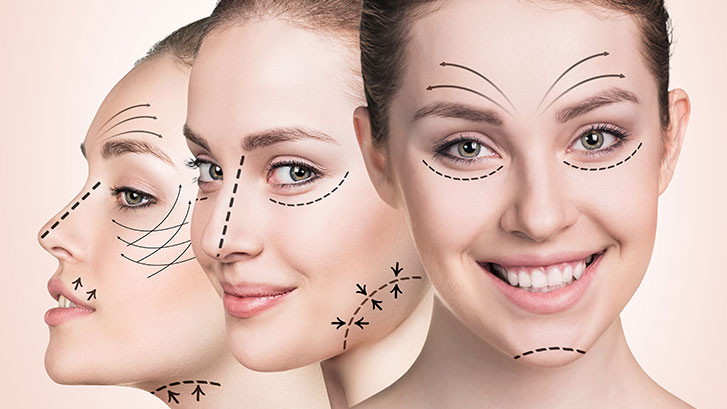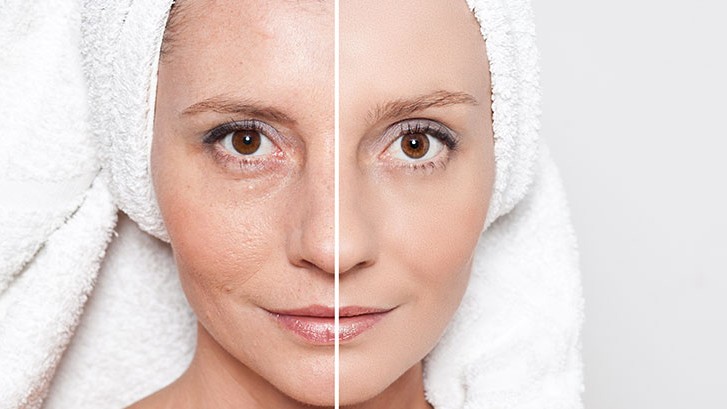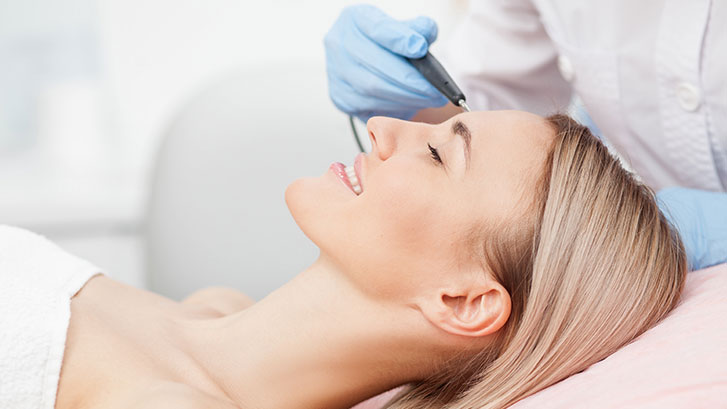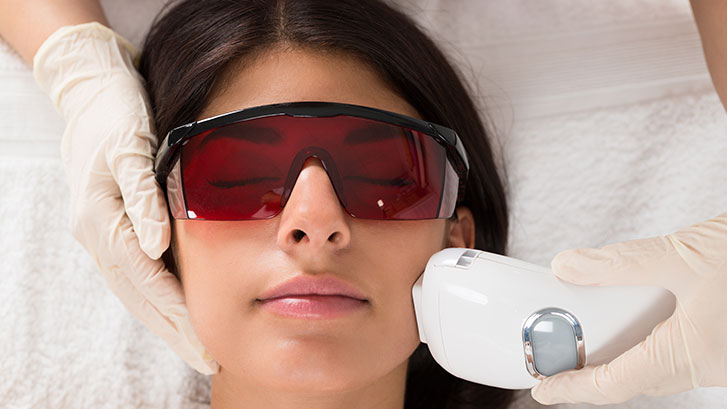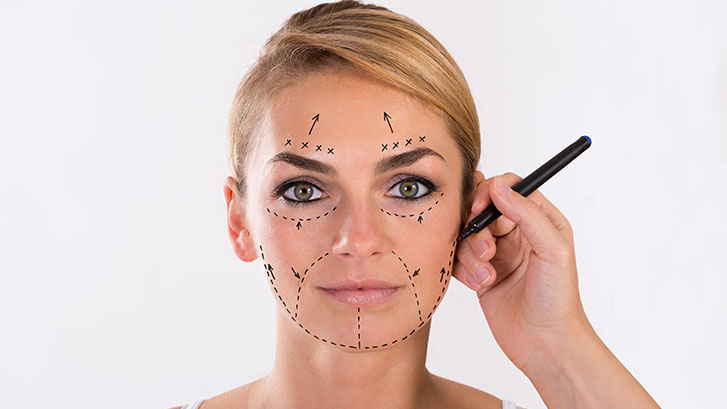
As we get older, our skin loses its elasticity. This is often evident in areas around the eyelids. Accumulation of lose skin creates a lot of creases in the lower eyelids. Moreover, the lose muscles underneath also creates protruding cushions around the eyes that give the appearance of bags. While drooping eyelids do look unsightly, the most disadvantageous thing is, they can obstruct your vision.
It is normal for people to suffer from a droopy eyelid. But if you want to correct your eyelids, you can get an eyelid reduction surgery. Also called blepharoplasty, cosmetic eyelid surgery removes the excess skin and fat around the eyes. It thus reduces the swelling and improves its overall look. Eyelid surgery may sound simple, but there is a lot of essential information that you need to know first.
Why Is It Needed?
There are many reasons why eyelid surgery is necessary. Aside from improving the overall aesthetics, eyelid surgery is also performed to improve the functional vision of the patient. Having droopy and baggy eyelids can impair the vision and reduce the ability of the patient in doing certain tasks like driving or using the computer. Moreover, droopy eyes also make it difficult for people to wear contact lenses or glasses.
There are many other conditions that require the need for functional eyelid surgery and these include irritation caused by the excess skin of the eyelids rubbing together. And even forehead discomfort due to strained muscles around the eyelid area.
Once these conditions have been identified, eyelid surgery is performed by ophthalmologists, ENT surgeons and general plastic surgeons.
Preparation Before the Surgery
Prior to the day of your surgery, there are some things that you need to do to help you during the operation. Below are the essential things that you must know before undergoing the eyelid surgery.
• Stop taking blood-thinning medications, like aspirin and ibuprofen two weeks before the surgery to reduce the risk of excessive bleeding.
• Do not drink anything after midnight and eat only a light meal the evening before the operation.
• Take the required medication the morning of the procedure. These include medication for blood pressure and so on.
• Never wear eye makeup during the day of the operation.
• Make sure that you have someone to take you home after the operation.
How Is the Surgery Performed?
The operation can be carried out by either general or local anesthesia. In general anesthesia, the surgeon makes an incision around the natural lines of the eyelids where the excess fat and skin are excised. Once the fat and lose skin are removed, the incision is closed. A resurfacing laser can also be used to tighten the external skin as well as reduce wrinkles and remove any external scars.
After the surgery, it is helpful if you keep your head elevated for a couple of days. This is necessary to improve the drainage around the head area. You can also use a cold compress or ice packs to ease the swelling. After several days to a week, you will go back to the doctor to have the sutures removed. However, you will continue to use suture strips for a week more to provide support to the lower eyelids.
The Benefits of Cosmetic Eyelid Surgery
Eyelid surgery has the amazing ability to both restore youthfulness to your face by removing sagging skin and tired-looking bags, while potentially aiding in your ease of vision. Few cosmetic surgeries offer the benefits of this. Additionally, eyelid surgery can be performed in conjunction with other cosmetic procedures. Skin treatments such as chemical peels can add (or rather take off) a whole new layer to your procedure, gifting you with beautifully young skin and permanently refreshed eyes.
Eyelid Surgery in Los Angeles with Doctor Binder
If you feel like you may be a candidate for eyelid surgery in Los Angeles, or you’ve been recommended to have one by another medical professional, contact Doctor Binder to schedule an appointment and consultation to discuss the procedure in greater detail.
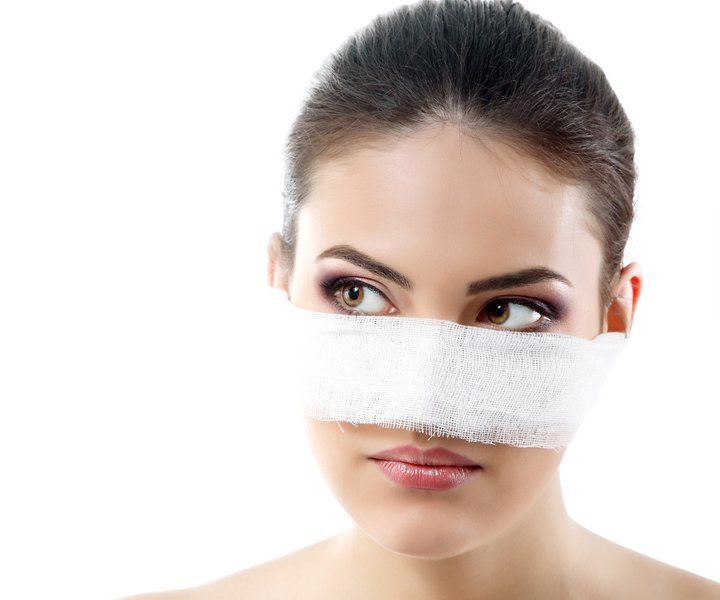
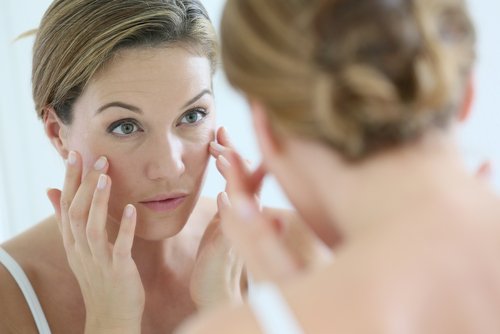
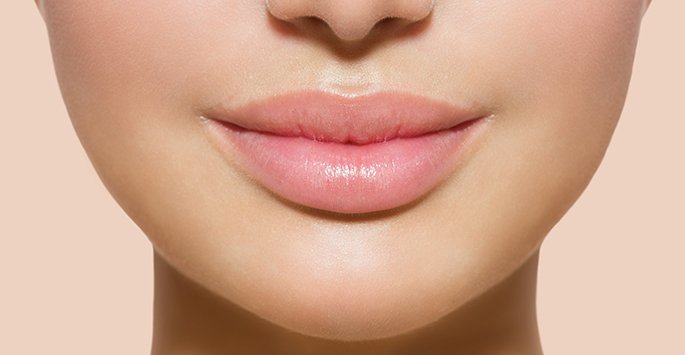







As the temperature drops so does your skin’s ability to fend off the ravages of Mother Nature. Harsh winds and dry air remove the natural oils from your epidermis, making it dry and prone to irritation. The skin can become itchy and painful, and conditions like eczema and psoriasis can act up. Winter weather does its best to damage your skin, but there are several precautions you can take to lessen the most severe punishments doled out by these chilly months.
COVER UP
In addition to bundling your body with as many layers as possible, be sure to remember the most important layer: your skin. Whenever your bare flesh is exposed to the elements, they take their toll. By applying a moisturizer with the proper SPF, you multiply your skin’s defense against the weather. Even though sunblock is considered a summer accessory, SPF actually stands for “sun protection factor” – and the sun shines year round. “Protection” is the key word of the popular phrase/acronym, so protect yourself heartily this winter. And for the best defense, just add water…
STAY HYDRATED, INSIDE AND OUT
Water is the essential building block of all life, so any physician would agree that hydration is the key to great health. Stock up on H2O, but be wary of how you sip it. Drinking directly from a cup or bottle leaves watery residue on your lips. When that runoff evaporates, it draws your natural oils with it. This can result in chapped lips, which triggers a thirst for more water, creating a vicious cycle. Instead, you should drink from a straw and be sure to apply a petroleum-based salve on your lips at the first signs of chapping or chafing.
But it’s not enough to just imbibe water; you should also incorporate moisture into your daily routine and environment. Many people use humidifiers to “winterize” their homes. Ideally, the humidity should measure between 30 and 50 percent (this can be measured with a hygrometer). But external hydration has its limits, so don’t overdo it.
AVOID EXCESSIVE, HOT SHOWERS
While long, hot showers can feel like a welcome reprieve from the February climate, the heated water is harsh on your skin. Keep your bath time brief and use gentle soaps with moisturizing ingredients. After your shower, use a towel to pat dry. Rubbing with a rough cloth can irritate your skin. This rule also applies to the inner layers that you don when you get dressed, so avoid wools and polyester; the more contact these itchy fabrics have with your skin, the more they irritate it. Instead, wear breathable fabrics that are more conducive to the maintenance of healthy skin.
EXFOLIATE RESPONSIBLY
The dead cells accumulating on the surface of your skin can prevent the growth of healthier replacement cells, so exfoliation is vital to battling the winter blues. By removing these dead cells, you prevent them from clogging up your pores and worsening the irritation of the cold weather. You can exfoliate at home or get more thorough treatments from a cosmetic or plastic surgeon. At-home exfoliators can include jojoba scrubs, beads, fruit enzymes, and other treatments.
Alternately, you could opt for professional skin resurfacing treatment such as chemical peels, dermabrasion, and microdermabrasion, or laser resurfacing treatments. Regardless of the type of exfoliation, be sure to moisturize well afterward, as the process strips your skin of its protective layer of oils.
REPLENISH YOUR SKIN
Once you’ve taken steps to protect your skin against further damage from the cold, you need to resupply your skin with the hydration that it has already lost. You should also apply ample moisturizers to both promote cell health and replace the protective barrier of your epidermis. Your moisturizer should be oil based rather than water based (rule of thumb: many moisturizers marketed as “night creams” are oil based), but be careful to use oils that won’t clog your pores, like mineral oil, primrose oil, avocado oil, or almond oil. Avoid shea oil and shea butter. Ideally, your moisturizer will contain humectants, which are ingredients that promote your skin’s natural hydration. Ingredients to seek out include glycerine, sorbitol, and alpha-hydroxy acids.
CONSULT A PROFESSIONAL
To maximize your healthiest glow during the winter, be sure to visit a medical professional. A dermatologist can help you determine the best routine to ensure the health of your skin. Additionally, a plastic surgeon who specializes in facial cosmetic procedures can strategize the smartest ways to keep your skin looking its best the whole year through.
Based out of Los Angeles, Dr. William J. Binder is considered one of the world’s best plastic surgeons. He is double board certified, has been extensively published, and has 10 patents on various medical devices and pharmaceuticals.
Give your skin the care and consideration it deserves, especially in the severe and stressful winter months. Contact Dr. Binder’s office today to schedule your consultation.


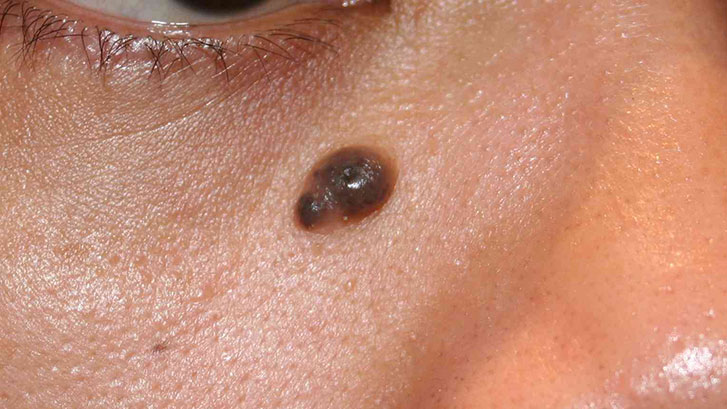


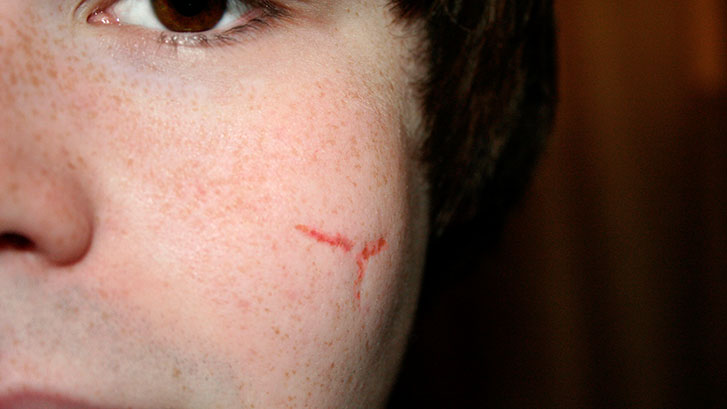

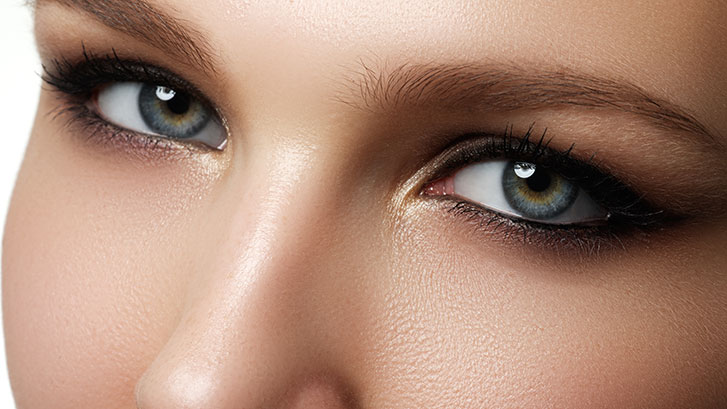
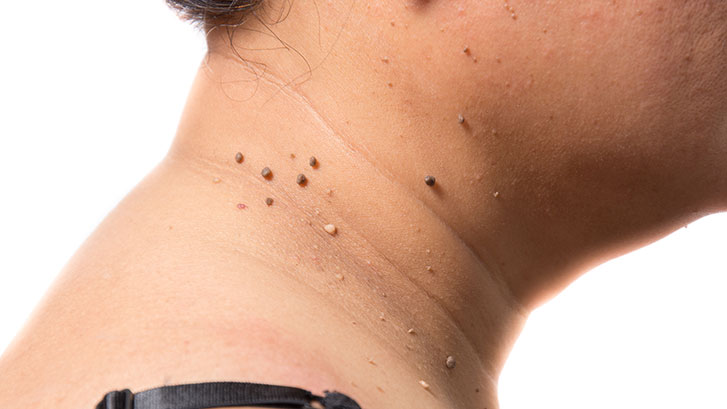
It goes by many names: beauty mark, patch, spot, birthmark, etc. But for the sake of clarity, let’s call it what it is: a mole. It could be harmless or it could be the warning sign of something more serious.
Do you have any suspicious moles that you’ve been secretly fretting about? Are you worried that your mole might be cancerous?
Since most skin cancers start in irregular spots, it is important that you check your skin every few months. Ask your partner or physician to help you assess areas of the body that you can’t see yourself.
Know Your Stages
Let’s start with the good news: the sooner you identify a cancerous mole, the better your chances are to avoid more serious health concerns down the road. For example, patients with a Stage One prognosis have higher odds of beating cancer than those with a Stage Four assessment. Before moving on, let’s define these terms.
STAGE ZERO – This diagnosis means that there are no cancer cells detected yet, but the presence of abnormal pre-cancerous cells that must be monitored.
STAGE ONE – The earliest stage of cancer growth, this phase is typified by the fact that the affected cells are all contained in one finite area of the body.
STAGE TWO – This is when cancer has spread to adjoining regions of the inception point.
STAGE THREE – As cancer spreads further, it could infect your lymph nodes or other sensitive tissue matter.
STAGE FOUR – At this point, cancer has metastasized and branched out to various parts of the body, making its eradication more complicated.
But complicated doesn’t mean impossible, so let’s focus on the positive and work together to fight cancer before it spreads. Here’s how to determine whether or not your moles may be cancerous.
Types of Moles and How They Look
- Normal mole—is a harmless spot that develops in childhood and later in life and can be found anywhere. Typically, normal moles are smaller than a pencil eraser and are round and symmetrical with smooth borders and an even color.
- Dysplastic nevus—is a type of mole that looks different from a common mole. It can have a mixture of several colors, from pink to dark brown, and is usually flat with a smooth, slightly scaly, or pebbly surface, with an irregular edge that may fade into the surrounding skin.
- Actinic keratosis—is a common precancerous growth often found on your scalp, face, hands, or forearms. They are a rough, flesh-toned pink or red patch that may be itchy or scaly. Actinic keratosis should be removed because five to 10 percent of them can become cancerous.
- Basal cell carcinoma—is caused by sun damage and typically found on the face. It normally appears as a pinkish or reddish patch that may bleed or scab. This type of cancer is easy to treat if caught early.
- Squamous cell carcinoma—this type of cancer often appears on the body, legs, or hands and is curable if caught early. It appears as a thick growth that can peel and bleed and may have an irregularly shaped border.
- Melanoma—this serious form of cancer can spread quickly, but is curable if caught early. Alert your doctor if you see a dark, irregularly shaped growth with an uneven reddish-brown, brown, or black coloring.
Since this last form of a mole is the most potentially hazardous, let’s take a closer look at its symptoms, features, and variations…
What is Melanoma?
Melanoma is a type of skin cancer that begins in melanocytes. It is potentially dangerous because it can invade nearby tissues and spread to other parts of the body, such as the lung, liver, bone, or brain. Since most melanocytes are in the skin, melanoma can occur on any skin surface. It can develop from a common mole or dysplastic nevus, and it can develop in an area of apparently normal skin. In addition, melanoma can also develop in the eye, the digestive tract, and other areas of the body.
Often the first signs of melanoma are a change in the shape, color, size, or feel of an existing mole. Melanoma may also appear as a new colored area on the skin.
The early features of melanoma are:
- Asymmetry—This is defined as a mole that is off-kilter. In other words, if the shape of one half does not match the other half, then it is asymmetrical.
- The border is irregular—If the edges of your mole are ragged, notched, or blurred in outline, then it qualifies as irregular. The pigment may spread into its surrounding skin in these cases.
- A color that is uneven—Shades of black, brown, and tan may be present in some cancerous moles. Areas of white, gray, red, pink, or blue may also be seen.
- Diameter—Be aware if there is a change in size, usually an increase. Melanomas can be tiny, but most are larger than ¼ inch wide.
- Evolving—If the mole has changed over the past few weeks or months, then be sure to contact your doctor as soon as possible.
Melanomas can vary greatly in how they look. While many will show all of the above features, some may only show one or two of the above features.
Screening and Prevention
The only way to diagnose melanoma is to remove tissue and check it for cancer cells. Your doctor will remove all or part of the skin that looks abnormal. Usually, this procedure only takes a few minutes and can be done in a doctor’s office, clinic, or hospital. The sample will be sent to a lab and a pathologist will look at the tissue under a microscope to check for melanoma.
If you want to help prevent melanoma, then you need to be sun smart. Here are some tips on how you can be sun smart:
- Spend time in the shade between 11 am and 3 pm
- Wear a T-shirt, hat, and sunglasses
- Use sunscreen with at least SPF 15 (the higher the better), with good UVA protection (the more stars the better)
- Avoid sunbeds as they are not a safe alternative to tanning outdoors (the intensity of the UV rays can be 10-15 times higher than that of the midday sun)
You may be more at risk of developing skin cancer if you have:
- Fair skin
- Lots of moles and freckles
- Red or fair hair
- Had skin cancer before
- A family history of skin cancer
Early Detection Yields Healthy Results
The stages outlined above give doctors and patients a roadmap of how to maneuver the detection and treatment of potentially cancerous moles. Case in point: one comprehensive study recorded the survival rates of approximately 60,000 patients recovering from melanoma diagnoses. This is what they found:
- People who identified their affliction during Stage One-A recorded a 97% rate of survival after the five-year mark. That same group boasted a 10-year survival rate of approximately 95%.
- The numbers dip slightly when we move on to Stage One-B. 92% of that subgroup survived the five-year benchmark while 86% went on to the 10-year milestone.
- Stage Two saw lower statistics. The five-year survival numbers for 2-A patients were about 81% and the 10-year rate was around 67%. Stage Two-B marked a 70% rate for the five-year study and 57% at the 10-year mark.
- Patients in Stage Three saw even lower survival rates on average, although the numbers ticked up for those in Stage 3-A. That may be due to the fact that the initial tumor is smaller than in advanced Stage Two cases and therefore more treatable.
- If the melanoma advances to Stage Four, the five-year survival range drops to between 15 and 20 percent. The 10-year rate dips even lower to 10-15%.
Don’t be a statistic. Take control of your wellbeing, consult a trusted medical professional, and be on the lookout for suspicious growths.
Getting Your Moles Checked
If you are worried about any mole that you have, please don’t panic. Our skin is varied and complex; it evolves and changes in response to how we age and grow, and it also reacts to environmental conditions such as sun exposure. It may be nothing to worry about, but awareness is always encouraged.
Regardless of your particular physiological situation, knowledge is the best medicine. If you have any questions or concerns, you should schedule an appointment with Dr. Binder. The most effective way to ensure that you don’t have skin cancer is to have your suspicious moles checked out and, if necessary, removed by a qualified doctor. As noted in the statistics above, moles that are diagnosed early can be treated for skin cancer. While the “Big C” is a scary notion to us all, we must work together to minimize its risks, maximize our awareness, and move forward to a healthier tomorrow.
